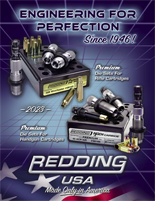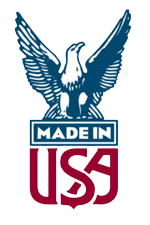Tech Line & Tips (FAQs)
Concentricity Problems
The concentricity, or neck runout, of loaded cartridges is an important consideration for reloaders and especially the varmint or target shooter.
There are many factors that can cause or contribute to neck runout during the reloading process and many reloaders who have not dealt with the problem before quickly blame the sizing or seating die.
While the dies may be at fault or have a contributing defect, modern CNC machinery and reamers that cut the body, shoulder, and neck simultaneously make such occurrences rare. Most problems are related to the brass itself and its uniformity both in terms of hardness and thickness and how much it is being stressed in the reloading process.
An entire book can be devoted to this subject, but the amount of stress the brass is subjected to can be your key to finding a problem. If you "feel" any difficulty and /or heavy resistance when resizing your cases this can be a telltale clue.
Excessive difficulty while resizing can indicate any of the following: Poor choice of case lube, failing to clean the die and/or brass, faulty polish inside die, chamber large or at maximum S.A.A.M.I. spec resulting in excessive brass resizing. A large neck diameter in the chamber combined with brass that is thin or excessively turned can cause crooked necks in a hurry. The more brass has to be moved the more its residual memory takes over.
Resistance to pulling your cases over the size button can indicate problems. A "squawk" says "shame on you", you forgot to brush the residue out of the necks. A hard drag can indicate that the top of the size button is not smooth. Don't be afraid to polish the top radius with #600 wet paper, but don't reduce the outside diameter or you can create an excessive bullet fit. Carbide size buttons are now an option also; they have a lower coeffecient of friction.
We have conducted many tests over the years on the various factors contributing to concentricity problems with bottleneck cases. We have repeatedly found a definite correlation between the uniformity of the brass (or lack of it) and the resulting concentricity of the neck to the body of the case.
An interesting experiment also revealed that neck turning of brass that was intentionally sorted as non-uniform, showed little or no concentricity improvement when used in standard S.A.A.M.I. spec chambers. Conversely brass that was sorted and selected for uniformity remained uniform and concentric with or without a neck turning operation.
Another interesting observation can be found in the examination of fired cases that have crooked necks "as fired" right out of the chamber. Usually the chamber is being blamed for the problem.
Looking at the primers under magnification you can usually find a telltale machining mark or other blemish that was imprinted from the bolt face. This will give you an index mark with reference to the chamber. Mark this index mark on the cases with a felt tip marker and go about checking the concentricity. If the runout is random to your index marks the problem is not the chamber. Further examination will show the same correlation with the good and bad brass.
Note that to this point we have not talked about seating dies. That is because 98% of all concentricity problems exist in the brass prior to bullet seating.
Keep in mind that no seating die ever made will correct problems. The best you can do is to obtain a quality seating die that does not add any.
UPDATE: Feb. '96
Redding has now introduced neck sizing dies that use interchangeable sizing bushings in .001" increments. These dies can help reduce overworking of the brass and the resulting loss of concentricity.
If you have further questions, please feel free to contact our tech line below.







